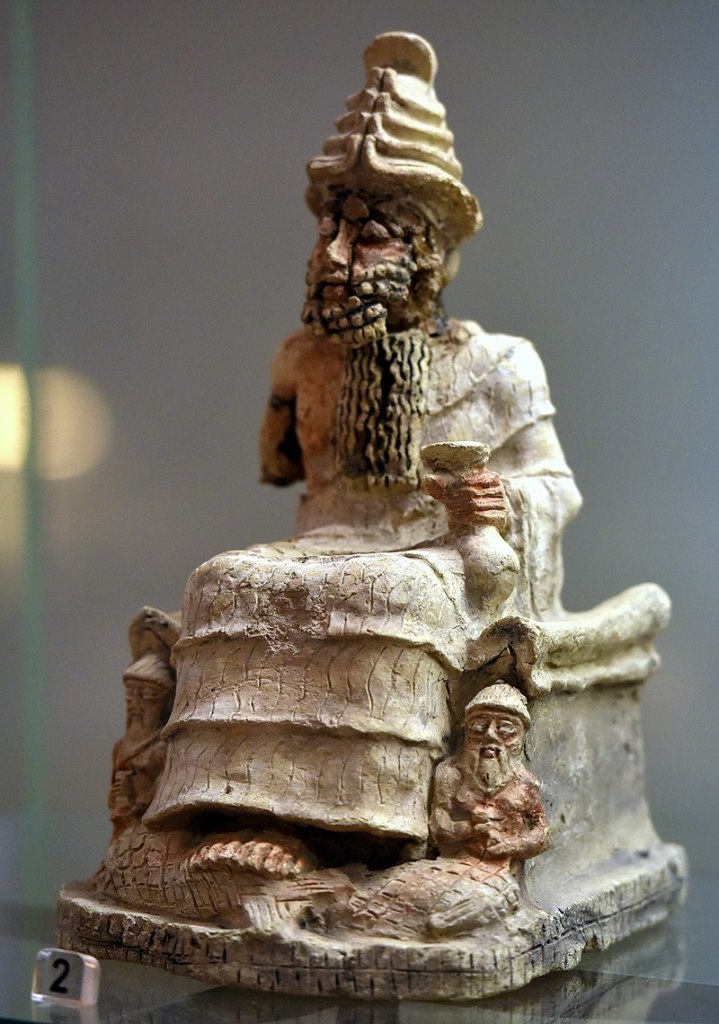Enki
In contrast to the distant Anu, Enki (Ea in Akkadian) was a hands-on god, a wellspring of benevolence for the Mesopotamians. Ruling over water, the lifeblood of their civilization, he wasn’t just a celestial figure but an active force in their daily lives. Enki’s wisdom wasn’t abstract; he was the divine craftsman, credited with shaping the world and bestowing upon humanity the skills and knowledge needed to thrive.

Symbols: Goat, fish, chimera
Parents: Anu and Nammu
Consort: Ninhursag, Damkina
Children: Marduk, Dumuzid, Ninsar, Ninkurra, Uttu, Ninti
Greek Equivalent: Poseidon and Prometheus
Roman Equivalent: Neptune
In a land thirsting under the relentless sun, Enki’s dominion over water was paramount. Imagine him depicted with flowing streams coursing through his very being, a visual representation of his connection to the life-giving Tigris and Euphrates rivers. This wasn’t just symbolism – it ensured the Mesopotamian civilization flourished, for Enki’s control of water meant control over agriculture, fertility, and prosperity.
But Enki’s wellspring of generosity extended beyond the physical. He was also the god of wisdom and knowledge. People saw him as a counselor, a divine source of solutions and profound insights. Sumerian creation myths even credit Enki with the very act of creating humanity, crafting them from clay and breathing life into them. Enki wasn’t just a distant ruler; he was a hands-on god, intricately woven into the fabric of Mesopotamian life.

He was a protector who actively intervened in human affairs. Imagine him as a divine champion, ever watchful and ready to offer assistance in times of hardship. This compassionate side solidified his bond with the Mesopotamians, who saw him not as a distant deity but as a source of guidance and support.
Enki’s influence wasn’t limited to the spiritual realm. He was also the god of craftsmanship and technology. Myths credit him with innovations that transformed human lives. He was the patron of artisans and the spark of creativity that ignited human progress and innovation. Enki wasn’t just the god of what was, but also the potential of what could be, a constant reminder of humanity’s capacity to forge its own destiny.

Grand temples, like the E-abzu in Eridu, stood as testaments to his power. These weren’t just places of worship; they were centers of learning, fueled by Enki’s association with wisdom. Here, hymns and prayers echoed through the halls, praising his benevolence and the vital role he played in shaping humanity’s destiny.
